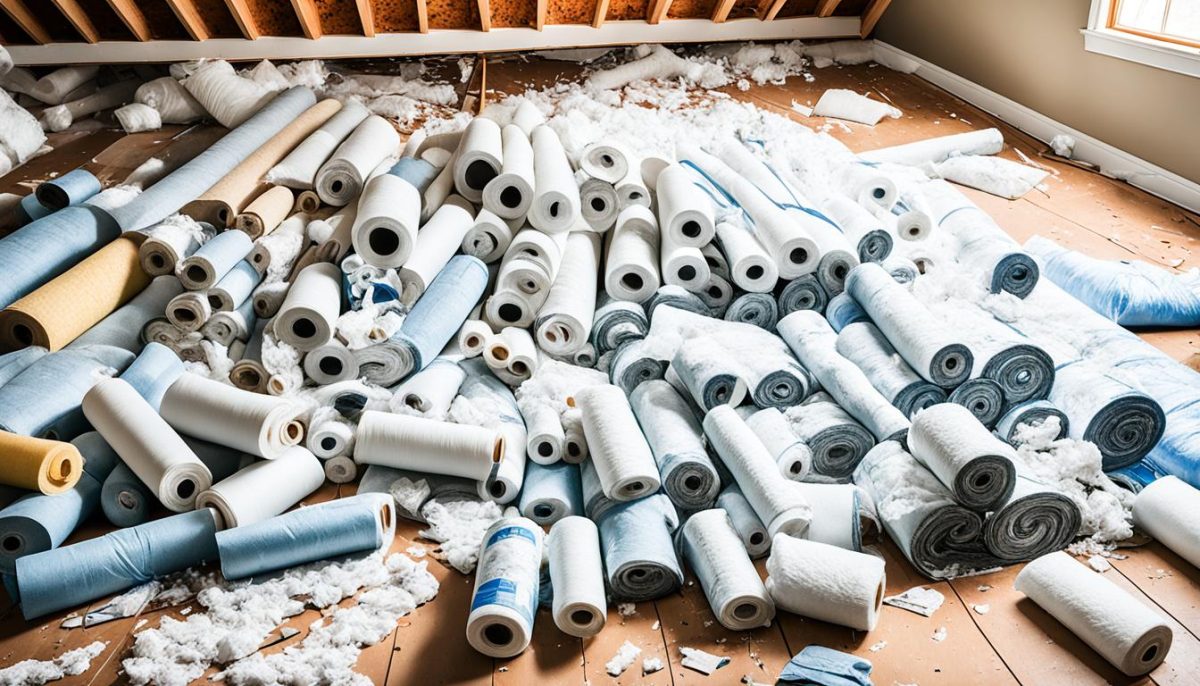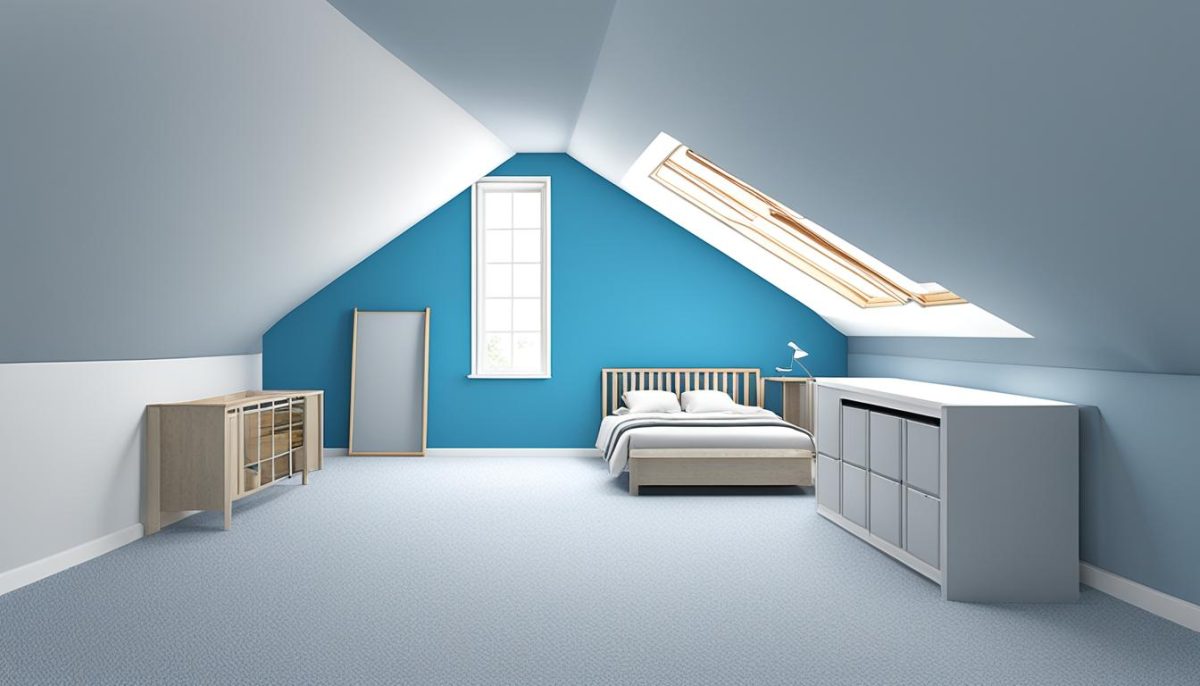Are you concerned that your home is not as energy-efficient as it could be? Did you know that one of the most significant sources of energy loss is due to improperly installed attic insulation? Having the right home insulation in place is essential to reduce energy costs and keep your home comfortable year-round. In this section, we will help you understand the importance of proper attic insulation and how it can make your home more energy-efficient.
By ensuring your attic insulation is correctly installed, you can save money on utility bills and help the environment by reducing your carbon footprint. Using the right materials and techniques help to prevent heat loss, keep your home cool in the summer months, and avoid moisture buildup that can lead to mold growth. Make sure your attic insulation is up to par, and you will notice a considerable difference in your home’s energy efficiency.
Keep reading to learn more about the benefits of proper attic insulation, how to select the right materials and insulation R-value, and the various costs to expect depending on your choice of insulation.
The Benefits of Proper Attic Insulation
Properly installed attic insulation offers numerous benefits that extend beyond energy efficiency. A well-insulated attic can significantly reduce utility costs while also providing enhanced indoor comfort. As warm air rises, it can escape through the roof if there is insufficient insulation, making it harder to maintain a consistent indoor temperature.
With the help of an experienced insulation contractor, you can achieve optimal insulation performance. Professionals can assess your home’s unique insulation needs, recommend the best insulation material for your attic, and ensure that it is installed correctly.
In addition to improved energy efficiency and increased comfort, a properly insulated attic can also provide other benefits, such as:
- Extended lifespan of your HVAC system
- Reduced noise pollution
- Decreased carbon footprint
- Increased home value
Investing in proper attic insulation is a wise decision for any homeowner looking to save money, increase comfort, and improve the overall value of their home.
Types and Materials for Attic Insulation
When it comes to insulation installation, there are various types of attic insulation materials that you can opt for. Each has its unique pros and cons, which you must be aware of before making a decision.
One of the most common materials used for attic insulation is fiberglass insulation. It is inexpensive, easy to install, and highly effective in keeping the air inside your home at a consistent temperature. However, fiberglass can cause skin and eye irritation during installation, making it an unsuitable DIY project.
Another option to consider is cellulose insulation. Made from recycled paper, cellulose is environmentally friendly and helps prevent air leakage when properly installed. However, its dense composition can attract pests and rodents to your attic.
If you want to invest in a long-term attic insulation solution, spray foam insulation is a great choice. It offers superior energy efficiency, improves indoor air quality, and prevents moisture buildup. Despite the high cost of installation, spray foam is worth the investment if you want to enjoy optimal insulation performance.
Mineral wool insulation is perfect if you are looking for fire-resistant and soundproof attic insulation. Its excellent sound-dampening qualities also make it a popular choice for recording studios. However, mineral wool is not as effective in preventing air leakage as other insulation materials.
Factors to Consider When Selecting the Right Insulation Material for Your Attic
When selecting the right insulation material for your attic, you must consider several factors:
- The R-value of the insulation material, which determines its thermal resistance
- The size of your attic space, and whether the insulation will cover all areas effectively
- The expected lifespan of the insulation material, and whether it requires regular maintenance or replacement.
With these factors in mind, you can make an informed decision on the type of attic insulation material that suits your needs and budget.

Understanding Attic Insulation R-Value and Cost
When it comes to attic insulation, R-value is a critical factor in determining its energy efficiency. R-value measures the insulation’s ability to resist heat flow, and the higher the value, the better the insulation performance. Understanding R-value is crucial in selecting the right insulation for your attic.
The required R-value for attic insulation varies depending on your climate zone. For instance, colder regions require higher R-values than warmer areas. It’s essential to check with your local building code to ensure that you’re meeting the minimum requirements for attic insulation.
One of the significant considerations when choosing attic insulation is the cost. The cost of insulation depends on various factors, such as the type of insulation, the R-value, and the size of the attic space. While high-performance insulation with a higher R-value may cost more, it can save you money in the long run by reducing your energy bills.
Calculating the R-value required for your attic insulation involves assessing the existing insulation, measuring the attic’s size, and determining the climate zone. You can use online R-value calculators to help you determine your attic’s required R-value.
Beyond the cost of insulation, it’s worth noting that proper insulation installation can have a significant impact on its effectiveness. Poor installation can result in gaps and voids that reduce R-value, causing energy loss and reducing your insulation’s effectiveness. Hiring a professional insulation contractor can ensure that your attic insulation is properly installed for optimal performance.



